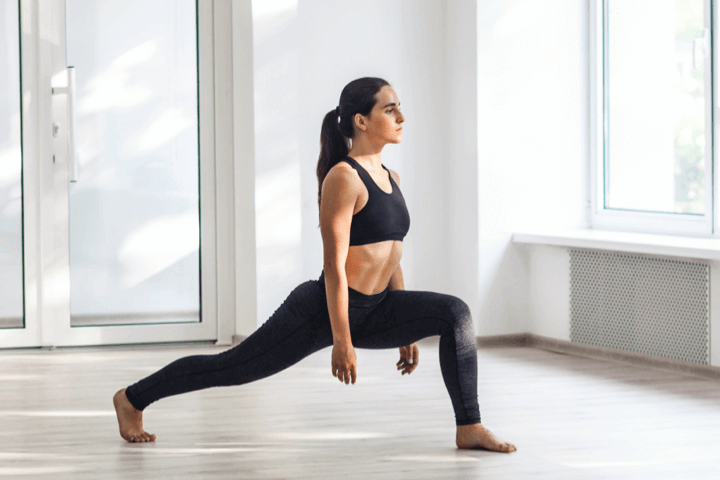Workout For Butt: Deficit Reverse Lunge
Deficit reverse lunges can improve any glute/leg workout because it efficiently activates the lower glutes. It is noteworthy that the glutes can be activated from this lower position, whether for aesthetic or athletic reasons.
Overview
What is deficit reverse lunges
Deficit reverse lunges are effective, because they bring your hips further into flexion. While it’s true that they work your quadriceps hard, prolonged hip flexion will put your glutes in a deeper extended posture and put more strain on them over a longer distance. Either you or the weight you are using should be below the height of the platform when you stand on it. It is called a deficit because of this. Your glute max’s lower fibers will specifically take the brunt of this position’s impact.
How to do a deficit reverse lunge
- Create a step platform and place no more than two risers beneath it. As a starting point, the platform alone is also excellent.
- Start by putting both feet firmly down on the platform. To guarantee that your heel always makes contact with the platform during the upcoming reps, edge toward the front of the platform.
- Leap from the platform while reversing. Make careful to take a sufficiently lengthy step backward and avoid “buckling down” by putting too much weight on your rear foot. Leaning forward as you lunge will help you counter this.
- Put your toes down on the ground behind you. Bring the trailing knee to the floor until it is half an inch above the surface in one fluid motion. Keep your chest out.
- Drive through the heel of the leading leg to ascend to the starting position. For sets of 8–10 reps each, switch legs.
- When using dumbbells, be careful not to use too much force. Consider this a patterning, mobility, and joint-health-focused move. Using 60-pound dumbbells is inappropriate here and now.
Benefits of deficit reverse lunges
Increasing hip range of motion. You are lunging deeper when employing a deficit than you would if you were just on a level surface, which broadens the hip range of motion. Hip stretches like this promote greater hip flexibility and mobility, which facilitate better lower body movements. In addition to restricting movement for athletes, tight hips can also be the source of back pain.
FAQ
While both forward and backward lunges focus on distinct leg muscles, they both engage the glutes, legs, and abs. Forward lunges target the quads more than reverse lunges do, which concentrate more on the hamstrings and glute max.
Lunges, both forward and backward, are excellent exercises for building strength because they target the main muscles in your lower body, such as your quads, glutes, hamstrings, and calves. If you want more workouts that focus on glutes, JustFit can help you a lot.
The quadriceps and glutes are primarily worked in both directions, but a reverse lunge tends to focus more on the glutes and upper hamstrings while relieving some of the pressure on the knees.
Because it is more simpler to stress the muscles of the glutes, hamstrings, and quadriceps when performing backward lunges, they are safer for the knees. Backward lunges relieve pressure better than ordinary lunges since forward lunges often result in the knee going too far forward and over the toes.

